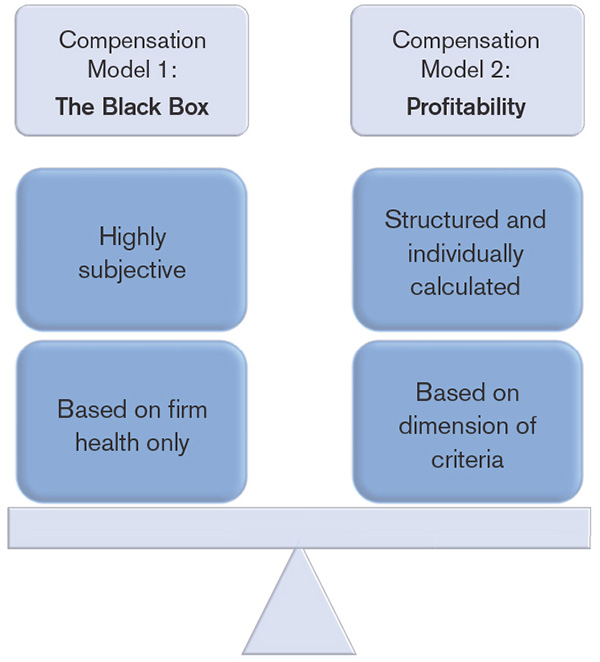
Contractors once relished a period of time in which most of their associates would stay with one company. Gone were the days of résumés that looked like patchwork quilts. However, the same forces that have allowed backlogs to grow have also created a new, employee-driven marketplace. The market abounds with free agents, leaving many contractors to question their own compensation models. It is easy to assume that the attrition a firm experiences is primarily due to salaries and employee compensation. As the flight grows from one person to an entire group of managers, the knee-jerk impulse is to throw more money at the survivors. While money may solve some of a firm's ails, is it really masking a deeper issue? Does this reactionary behavior simply create an organization full of highly paid, dissatisfied associates?
Is the Problem Strategic?
Why do so many employers think the root cause of their employees' departure lies in the compensation model? Simply put, this is all the employer hears. For instance, an employee could argue that leaving a firm for more money is hardly controversial. On the other hand, what if the real reason for an employee departure is that they cannot stand their direct superior, and what if that direct superior is you?
It is easy to see why firms think their problems are bundled in their compensation model. To be fair, there is a contingent of people that are driven by money. However, there is a larger segment of the population that wants to be connected with a winner. The best construction leaders take an introspective approach and examine why someone would leave their firm by addressing the following claims.
- "We're not going anywhere."—So often, firms confuse activity for productivity. What is the vision for the firm? If the firm has a vision, but the vision is merely an empty platitude, employees can become deeply frustrated and perceive the firm's leadership as apathetic and stagnant.
- "One second we're busy, the next we're not."—Recession aside, does the firm regularly go from feast to famine in the course of 12 months? Management shifts from chief business developers to chief operations officers and back again. As the senior team slides from side to side on the ship, most of the passengers and crew will be sick from all of the rocking.
- "We have no team depth."—A team with no succession plan has no future. People in the firm see this and naturally do not want to be last ones to turn the lights out.
- "I am just a cog in the wheel of this big machine."—This is a deep issue in many firms and manifests itself in the senior management that creates the perception that they care little for the welfare of associates.
None of these issues are insurmountable. Routinely examine the health of the firm. Ask the team, "How are we doing?" Consider having an outsider (a coach, an accountant, a consultant or your legal counsel) serve as a sounding board. Listen for key indications that the problems are deeper than just a paycheck.
What Else Do You Offer?
After sitting idle for so long, putting work in place appears to be the cure for managers and superintendents who thrive on construction activity. As firms focus on limiting overhead, the inclination is to simply add one more project. What is your firm doing for your employees, other than just paying them? In the same fashion as the "cog in the machine" symptom, it is important for a firm's senior management team to examine their team's overall development. For instance, consider the following points of interest:
- Long-term plans—What is an associate going to achieve in the firm long term? Even if an associate's long-term plans involve being a senior project manager, what will their training plans look like?
- Innovation—What are you doing to keep your team razor sharp? What are you doing to train on new technology or new trends?
- Training—This does not mean just the OSHA's obligatory 10 hours are adequate. Many will argue, "But what if we train them and they leave?" The same argument could be said as a corollary—"What if you don't train them and they stay?"
- Involvement in the firm—Sometimes a manager gets a better perspective on their own work when they see it from a different altitude.
- Keep it fun—Not everyone's definition of fun is the same, but how does your firm make work fun? We spend 60 to 70 percent of our lives at work, so why should it be devoid of fun and a sense of fulfillment?
Is It the Compensation?
Maybe the problem is the money, but not in the way you think. The first distinguishing characteristics that should be examined are a firm's fixed and incentive compensation. During the hiring phase, base salary has a huge impact on a candidate's decision-making process. Over time, the variable compensation piece becomes much more important and often drives many of the behaviors within a firm. Figure 1 depicts the two compensation models.
 Figure 1. The continuum of compensation models
Figure 1. The continuum of compensation models Many firms have migrated back and forth, searching for the perfect compensation program. The Black Box ensures a team environment is created, but leaves everyone in the firm confused about the criteria used to calculate each year's bonuses. Additionally, it fails to foster a spirit of meritocracy and could also create free riders. On the other hand, a compensation program driven by project profitability will create a team focused on project profitability. "Good of the order" initiatives tend to suffer as time and resources spent in other areas will ultimately impact one's personal bottom lines. While there is no perfect compensation system, great firms consider the following:
- Thresholds and guardrails—No one can argue that a minimum floor be established in the firm before any bonus funding takes place. A minimum dollar value should be set in accordance with ownership desire for a return on their equity or some other financial benchmark.
- Transparency—The targets cannot keep moving. The grading scales, thresholds and parameters should be clear to everyone.
- Criteria that speak to core values—If the core values of the firm are customer service, safety and productivity, those are the criteria that should be identified as bonus-worthy. This hedges against having your best superintendent being on a job that is financially a failure but successful because of that individual's merits. Assuming the bonus pool is funded, they should be rewarded for exhibiting core values.
- Not every problem within the firm is tied to an employee's compensation. When someone leaves the firm, it should never be taken lightly. So much can be gleaned from attrition and how to correctly use this critical intelligence to drive processes and tools for the betterment of the firm. Remember, the same people that are critical to running the construction projects of today will ultimately be running the business tomorrow.
